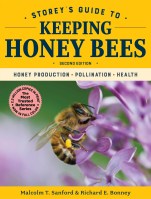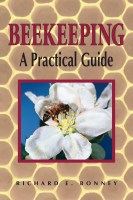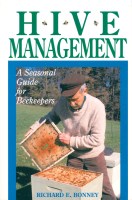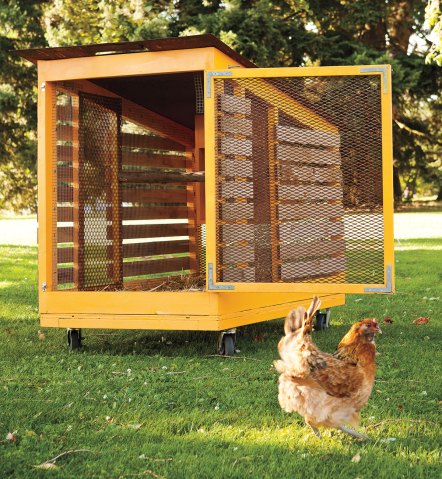Beekeeping 101: Where Should I Put My Hives?
Getting your bees properly situated in your yard is crucial for their success. Author Alethea Morrison addresses what to consider when siting your hives.
The question of where to site your hives has a different answer for every yard or home, but here are some basic guidelines:
Set the hives on a surface that is level side to side. A slight tilt forward is okay and can even help with water runoff.
Choose a warm, dry location. Areas that are prone to flooding or habitually damp and cool, such as the bottom of a hill or slope, are not suitable. Spots with too much shade or cold winds are also poor choices. Southern exposure at the hive entrance is ideal.
Year-round accessibility to the hives is important.
Be sure there are nectar and pollen sources for your bees to feed from within a two-mile radius of your location. This is unlikely to be a problem as bee forage is available just about everywhere, even in densely developed urban areas. Access to fresh water is also essential.
Give yourself some elbow room. You can space a pair of hives as close to six inches from each other, but you need several feet of space around one or two sides in order to move equipment around as you’re working the hives.
Know what predators (man or beast) are in your area and what protection your bees will need.
The bees’ flight path will extend in a straight line out of the hive entrance. Don’t point the hives toward the neighbor’s yard, street traffic, your back door, or your doghouse unless you have a hedge or fence to force the bees high into the air.
In addition to these basics, the following are important considerations. Don’t be discouraged, though, if you can’t put your hives in a location that’s 100 percent ideal. Do what’s best when it’s possible, and be okay with compromises when it’s not.
KEEP IT EASY
During peak times of year, you may need to work your hives often, and when you harvest your honey, you’ll be lugging extremely heavy boxes. The best scenario is to have your hives outside your home or a short distance away, so the responsibility of caring for your bees doesn’t become burdensome or easy to ignore. Like a garden, it’s nice to have it near enough that you can visit it often and know what normal looks like.
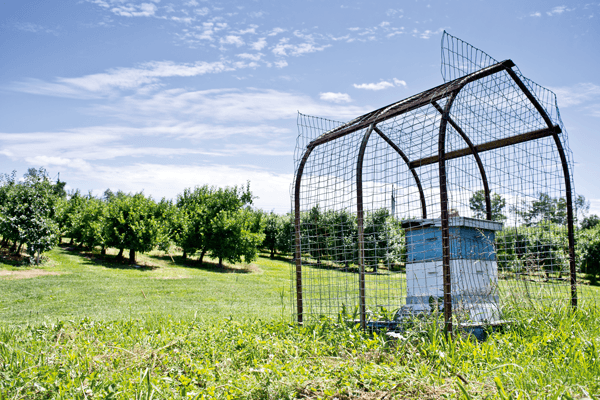
KEEP IT SECURE
When honey bees have the opportunity to choose their own home, they pick a spot about 10 feet off the ground. Their instinct to build their home in a high place serves them well. A skunk can be a terrible nuisance at a hive and will lurk outside the entrance to catch bees as they come out, rolling each one on the ground before popping the bee into its mouth like a bonbon. Humans, predators of everything under the sun, frequently vandalize hives out of ignorance or malice. Rooftops provide safety from such larger pests. A building, house, or garage with a flat roof is an excellent location for your hives and one reason beekeeping is such a good fit in urban areas.
Even if you aren’t a rooftop beekeeper, raising your hives at least 18 inches off the ground will keep your bees out of the reach of most skunks.
Bears are a weightier problem, and if you are keeping bees in bear country, it is critical to set up an electric fence before you hive your bees. Bears will devastate a hive, ripping it to pieces to eat the bee brood and honey inside. The time and money you invest in beekeeping will vanish in an instant if one of these marauders visits your beeyard, and a fence will be much more effective before a bear has tasted the sweet rewards inside the hive.
An electric shock will deter a bear that is simply sniffing out possibilities but not one that knows from experience that a cornucopia of pleasure is just one quick zap away. For this reason it’s important to start with an electric fence rather than resort to it as a remedial measure.
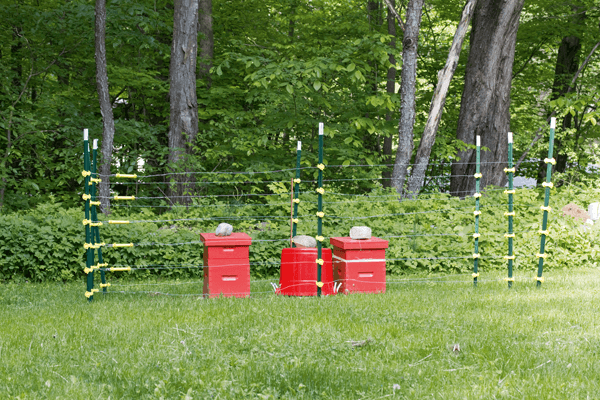
KEEP THE JONESES HAPPY
Although honey bees might lay down their lives in act of heroic resistance when you open up the hive, they rarely sting people unless they are defending their home. Playing a game of soccer or having a barbecue party in your yard is not likely to distract the bees from their intensely focused work. Even so, you don’t want bees bumping into you, your friends, or, worse still, neighbors and passersby. Once again, the rooftop provides an excellent location, as the bees’ flight path will start and end at a height that won’t interfere with human traffic.
Another option is to face the entrance of the hives toward a high fence, wall, or dense shrubs, which will force the bees to ascend and descend vertically as they come and go and will generally keep their flight path above head level. If you live within a stone’s throw of another home and you don’t have something like that in your yard, consider making plantings or erecting a barrier to serve that purpose. Be sure the barrier isn’t so close that it keeps the hive entrance too dark and cool. Warmth and sun gets the bees out of the hive and into the field for foraging.
KEEP IT COZY …
Honey bees have the remarkable ability to control the temperature in the hive. When it is too cold, they cozy up to each other in a close mass and can generate a surprising amount of heat. Even so, like most of us, they prefer to make life as easy as possible, so it’s best to locate their home in a spot with southern exposure and a mixture of sun and shade. Your climate, of course, factors into the balance of shade and sun that is ideal for your hives. Generally, lots of full sun is ideal to keep the hives warm and dry, with some shade in the hottest hours of the afternoon. In areas with very hot summers, however, a shadier spot will be better.
Wind chill is another environmental factor to consider. If you’ve located your hives in a gusty area, erect a barrier on the side of the prevailing winds.
… AND COOL
Bees not only generate fuel-free heat, but they also have AC. When it’s too warm they fan their wings and evaporate drops of water to cool down the hive. For that reason, they need continuous access to fresh water during the summer, which can be one of the challenges of rooftop beekeeping.
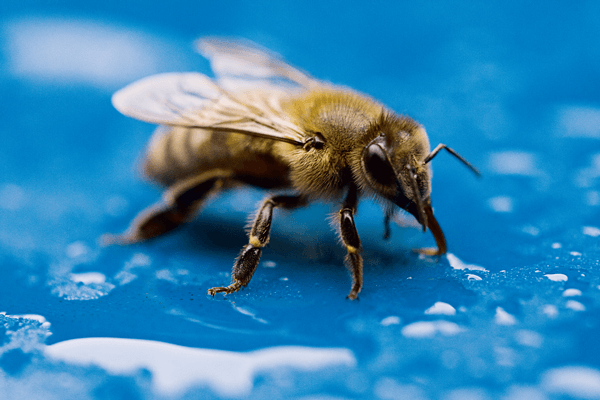
If you don’t live near a pond or stream, there are a number of good options for supplying your bees with water, and the best ones give them a place to land without the danger of drowning. Following are some ideas that can work in a rural, suburban, or urban environment:
- Set a pail full of water near your hives and float bits of wood or cork in it as landing rafts for the bees.
- Let an outdoor faucet drip slowly.
- Buy a feeder from a beekeeping supplier. Feeders that are sold for sugar syrup can just as well be used for plain water.
To ensure that your bees don’t wander over to a neighborhood swimming pool for their water supply, you can train them to drink from your water source by sweetening it at first with a small amount of sugar syrup. They will be drawn to the sweetness, and then will always return there even once you’ve switched to plain water.
KEEP IT TIDY
If you’re siting your hives on the ground, clear the area of any grass or weeds that could obstruct the hive entrances. The irony is that people spend inordinate amounts of time and money trying to encourage grass to grow on their lawn, but if you want to get rid of the grass, it’s an intractable weed. Herbicides may seem quick and easy, but I don’t recommend dumping poison in your beeyard. As a backyard beekeeper with just a couple of hives, I haven’t found it very difficult or time intensive to rake away new growth a few times a year.
To slow or eliminate weeds that are choking your hives, there are lots of options for covering the ground:
- Paving stones
- Cement pad
- Landscape fabric
- Mulch
- Aluminum flashing
- Wooden pallet
You can also keep your hives on a back porch or a spacious balcony. If your hives are on stands that are high enough, the weed problem may be minimal or even nonexistent.
KEEP IT TOGETHER
Especially with new packages of bees, a phenomenon called drifting is common. Drifting happens when bees that belong in one hive migrate to another, sometimes by accident. To help bees find their way home when you have multiple hives close together, you can paint the box fronts different colors or with different patterns. You can also orient the entrances in different directions.
KEEP IT FUN
Don’t get overwhelmed by all these considerations. The most important things are to cover the basics and to apply common sense and respect in relation to close neighbors so you don’t wear out your bees’ welcome. Do as much as you can for now, but know that you can fine-tune your setup at any time.
Find more guidance for the beginner beekeeper in Homegrown Honey Bees.
TEXT EXCERPTED FROM HOMEGROWN HONEY BEES © 2013 BY ALETHEA MORRISON AND MARCELINO VILAUBI. HONEYCOMB ILLUSTRATION © GILBERT FORD. ALL RIGHTS RESERVED.
Discover the joys of harvesting honey from your own backyard. Alethea Morrison outlines what you’ll need to know to make it through the first year, while stunning macrophotography by Mars Vilaubi brings the inner workings of the hive to life. With in-depth discussions of allergies, colony hierarchy, bee behavior, and more, this approachably informative guide bursts with enthusiastic encouragement. Keep your own bees, and enjoy the sweet buzz.


